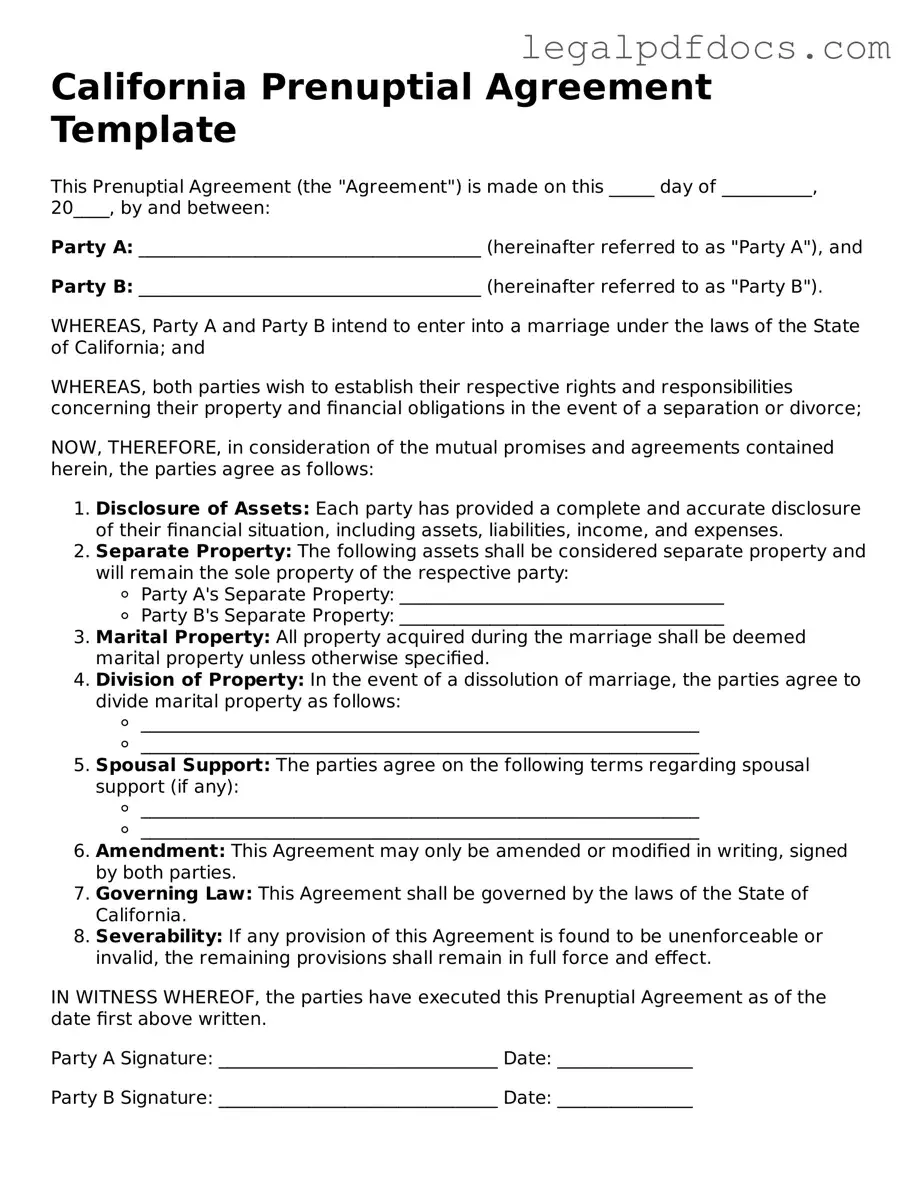Official Prenuptial Agreement Form for California
A California Prenuptial Agreement form is a legal document that couples can use to outline the division of assets and responsibilities in the event of a divorce or separation. This agreement serves to protect both parties by clarifying financial rights and obligations before entering into marriage. Understanding its importance can help couples make informed decisions about their future together.
Ready to take the next step? Fill out the form by clicking the button below.
Open Prenuptial Agreement Editor Here
